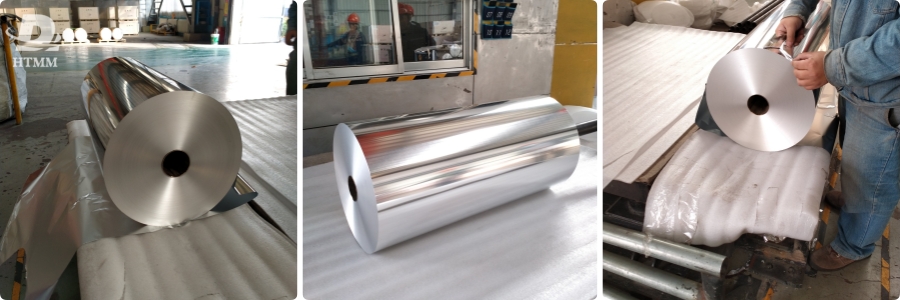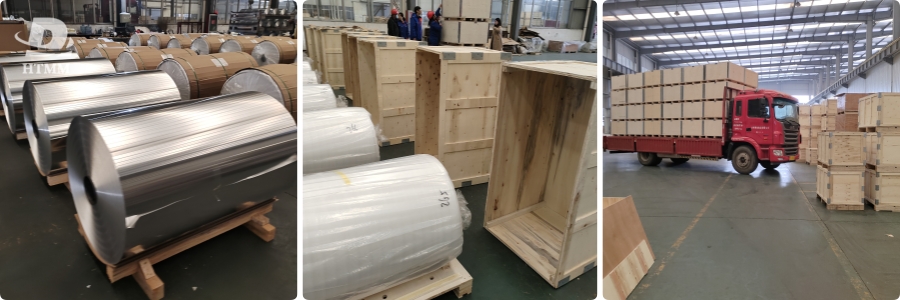Our goal for this detailed review is to provide packaging and manufacturing engineers with a thorough understanding of 8011 aluminum foil and 1235 aluminum foils beyond the standards. We evaluate alloy structural engineering, thermomechanical processing protocols, resulting in microstructural design, improved deformation and extensive material property testing to provide exceptional technical performance. A real application case study highlights the practical benefits our solution-based foil grades bring to global transformation.

By examining the scientific principles that distinguish this unique aluminum alloy, readers will gain valuable insight into our ability to differentiate products and solve technical problems. An in-depth understanding of the sub-determinants of performance will allow for informed decisions regarding the selection of appropriate materials for specific manufacturing challenges.
Let us first consider the use of 8011 aluminum foil and 1235 target files. Next, we will explore composite methods, metal fabrication concepts, high transfer rates, and unique technological advantages.
Required skills
We developed aluminum foil in 8011 and 1235 grades to meet the complex production processes found in many high-end industries:
8011 aluminum foil
Designed for complex metal fabrication applications that require high production rates and thorough fabrication capabilities. Equipment parts, industrial equipment covers and automotive fire shields are examples of common applications.
1235 aluminum foil
It is designed with dimensional stability in mind for packaging electronic and medical devices that require repeated chemical and heat processing cycles. Commonly used items include clean room equipment, pharmaceutical packaging and enclosures for applicable medical devices.
While 1235 aluminuim foil provides the strength to maintain critical geometric tolerances after restoration processes such as autoclave sterilization – essential for controlled and high-fidelity medical applications – 8011 emphasizes flexible fabrication capabilities.
Alloy Components Engineering
The precise composition of the compounds is the result of decades of refining chemical standards to enhance the effectiveness of each. The 8011 includes:
- Aluminum in scale
- Manganese (maximum 1.2%).
magnesium (up to 0.15%).
- Chromium (up to 0.25%).
Zinc (large 0.10%).
Project 1235: - Aluminum (Standard)
Manganese (up to 0.5%)
Magnesium 1-1.5 per cent
zinc (0.1% mass).
Fortunately, advantages of 1235 aluminium foil has a high magnesium content, which has been shown to maintain important properties of packaged medical products throughout the sterilization cycle, as well as providing strong resistance to metal corrosion.
thermo-mechanical processes
In addition to composition, the microstructures of high performance materials are also shaped by our cognitive behaviors. Event 8011:
- Accurate cold movement at the right temperature and reduction
- Texturing using reverse cuts
Treatment advantages of 1235 aluminium foil includes:
- Cold treatment and processing are carefully controlled - Low temperature keeps well recrystallized grains
It offers special features of advantages of 8011 aluminium foil, such as better design compared to 1235 resistance to recovery processes.
Microstructure design
Our processes create custom crystal structures that:
8011 Microstructure: The rotating structure allows a uniform shape of the profile; Larger grains, 10-15 µm, bend plastically during compression.
1235 Microstructure: fixed offsets maintain accurate dimensions; Smaller grains of 5-10 μm disrupt the regeneration process
This individual metallurgical "fingerprint" is the key to the specific abilities of each class.
Improved conversion infrastructure
Our state-of-the-art facility unlocks the full potential of each metal.
- Precision of cold rolls and thermal treatment lines.
- Cutting with precise requirements for coil processing - Multi-layer lamination for mixed products.
- Provides special relief for complex contours - Converts medical supplies to clean room standards
This efficiency allows for unprecedented size or dimensional integrity in advanced conversion operations.
Properties of different materials
The best features that provide different features:
Advantages of 8011 aluminium foil has over 200% elongation, creating a smooth and deep profile. Its workability makes complex shapes simple and flawless.
1235 - Output power increases by 30% Maintain micron accuracy - Dimensional consistency beyond sterilization exposure.
This overview provides an in-depth analysis of the various features of industry-specific solutions.
Special material solutions
Through co-innovation, we create:
- Experience testing new mix tracks.
- Combined construction and property coverages
Personal payment and device management
- Full customization and personalization possible.
Joint research and development projects develop new applications.
This strategy developed by the company has expanded the production capacity of its customers.
To summarize, the basic separation of 8011 and 1235 aluminum foil grades is achieved via deliberate scientific engineering. The most difficult fabrication problems faced by our international clients are accurately addressed by careful modification of composition, processing, microstructure, and the resulting material attributes. As a pioneer in research and development, we consistently push the boundaries of every grade via cooperative innovation in order to optimize quality, efficiency, and sustainability across markets. Accurately identifying differentiators reveals foil's flexible solution space and partnership-oriented value offer.
I would like to suggest and give instances of common uses for aluminum foil alloys 8011 and 1235:
Overview
As a manufacturer of aluminum foil committed to creating materials with specific applications, we want to enable our clients' manufacturing success by providing them with a thorough grasp of how our customized 8011 and 1235 foil grades address market demands.

We will go into more depth about suggested prototype usage scenarios that emphasize the unique performance characteristics of each alloy grade in this extended examination. Case studies from the real world will show the observable advantages gained in international marketplaces.
Our goal is to enable well-informed judgments about material selection that are perfectly in line with end-use criteria and technical conversion needs. Through a greater understanding of the specialized functionality of 8011 and 1235 foils, readers will be able to strategically improve workflows by taking use of aluminum's sustainable and adaptable properties.
Suggested 8011 Uses
Because 8011 aluminum foil is malleable and workable, it performs very well in accurate, high-speed metal forming processes:
Automotive heat shields: - Intricate shapes form flawlessly because to 8011's balanced ductility; - Complex 3D deep drawn profiles manufactured at mass scale effectively seal tight engine compartments
Appliance Components: - Press formed at high rates to create complex curvatures inside tight geometries; - 8011's formability enables the production of refrigerator liners, oven walls, and other delicate interior parts.
Industrial fabrication: By utilizing 8011's formability, equipment housings, ducting, electrical enclosures, and other manufactured parts effectively fulfill tight tolerances
Case Study: Automotive Exhaust Shield Specification: High volume shield that needs to accurately cover the vehicle's underbelly with complex curves.

